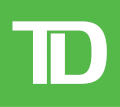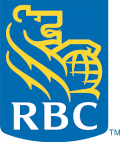Canada Prime Rates
Today's Prime Rate:7.20%
Current Bank Prime Rates
| Bank | Prime Rate |
|---|---|
TD | 7.20%* |
RBC | 7.20% |
CIBC | 7.20% |
BMO | 7.20% |
Scotiabank | 7.20% |
National Bank | 7.20% |
Latest Update: April 10, 2024
The Prime Rate stays at 7.2%, as the Bank of Canada holds the policy rate at 5%.
Inflation reached 2.8% in February 2024 from a multi-decade high of 8.1% in June 2022. It is still higher than the 2% target of the Bank of Canada (BoC) but is heading in the right direction.
The Bank of Canada is likely to start lowering its rates soon:
- If we annualize the seasonally adjusted 9-month inflation between May 2023 and February 2024, we arrive at a rate of 2.8%.
- Also, annualized inflation over the past 3 months was 1.3%.
- The unemployment rate has risen from 5% at the beginning of 2023 to the current level of 6.1%.
- Forward indicators suggest that excess demand is no more, and once again, the Canadian economy is in excess supply of goods and services .
- We should see inflation decline and rate cuts by the BoC soon.
The prime rate has risen from 2.45% in March 2022 to the current prime rate of 7.2%. As inflation is heading to the target and as the largest contribution to inflation is shelter whose shortage cannot be resolved by monetary policy, we expect prime rates to decline over the coming quarters. The Prime Rate is at its highest level over the past 22 years. This rate is burdensome on those with variable-rate mortgages, HELOCs, and lines of credit.
What is Canada's prime rate today?
The Prime rate in Canada is currently 7.20%. The Prime rate is the interest rate that banks and lenders use to determine the interest rates for many types of loans and lines of credit. These can include credit cards, HELOCs, variable-rate mortgages, car and auto loans, and much more. If you have any of these loans, changes in the prime rate will also change your debt payments and thus your GDS and TDS ratios.
Today’s Mortgage Rates
| HELOC | 1-Year Fixed | 2-Year Fixed | 3-Year Fixed | 5-Year Fixed | 5-Year Variable | |
|---|---|---|---|---|---|---|
| Lowest Rates | % | % | % | % | % | % |
| Average Rates (10 Lenders) | -- | |||||
| 30-Days Change of Average Rates | -- |
| Term | Lowest Rates | Average Rates (10 Lenders) | 30-Days Change of Average Rates |
|---|---|---|---|
| HELOC | % | -- | -- |
| -Year Fixed | % | % | NaN bps lower |
| -Year Fixed | % | % | NaN bps lower |
| -Year Fixed | % | % | NaN bps lower |
| -Year Fixed | % | % | NaN bps lower |
| undefined-Year Variable | % | % | NaN bps lower |
The basket of 10 lenders includes: CIBC, BMO, TD, Scotiabank, RBC, National Bank, Desjardins, nesto, Tangerine, First National
*Prior to March 2024, HSBC Canada was included in the basket
Prime Rate and Bank of Canada Overnight Rate
(1935 - 2024)
Canada Prime Rate Changes Since 2010
| Effective Date | Prime Rate | Change |
|---|
Canada Bank Prime Rates
RBC Royal Bank Prime Rate
RBC Royal Bank's Prime rate is currently %
RBC Royal Bank's Prime rate was changed to % from % on
Scotiabank Prime Rate
Scotiabank's Prime rate is currently %
Scotiabank's Prime rate was changed to % from % on
TD Bank Prime Rate
TD Bank's Prime rate is currently %
TD Bank's Prime rate was changed to % from % on
CIBC Prime Rate
CIBC's Prime rate is currently %
CIBC's Prime rate was changed to % from % on
BMO Prime Rate
BMO's Prime rate is currently %
BMO's Prime rate was changed to % from % on
National Bank Prime Rate
National Bank's Prime rate is currently %
National Bank's Prime rate was changed to % from % on
Canada Prime Rate Forecast
It’s expected that the Prime rate will decrease by -0.25 percentage points by June 30th, 2024, bringing Canada’s Prime rate from 7.20% to 6.95%.
Looking further out to December 31st, 2024, the Prime rate is forecasted to decrease by -0.75%, which will put Canada’s prime rate at 6.45%.
Forecast of Lowest Mortgage Interest Rates as of May 8, 2024
| Date | BoC Rate | Prime Rate | 5-Year Variable | 1-Year Fixed | 2-Year Fixed | 3-Year Fixed | 5-Year Fixed |
|---|---|---|---|---|---|---|---|
| 2023-11-10 | 5% | 7.2% | 5.83% | 6.59% | 6.39% | 5.74% | 5.34% |
| 2024-06-30 | 4.75% | 6.95% | 5.7% | 6.43% | 5.42% | 4.99% | 4.64% |
| 2024-12-31 | 4.25% | 6.45% | 5.2% | 6.07% | 5.14% | 4.77% | 4.52% |
| 2025-06-30 | 4% | 6.2% | 4.95% | 5.8% | 4.92% | 4.61% | 4.45% |
| 2025-12-31 | 3.75% | 5.95% | 4.7% | 5.6% | 4.76% | 4.51% | 4.42% |
| 2026-06-30 | 3.5% | 5.7% | 4.45% | 5.44% | 4.66% | 4.46% | 4.42% |
| 2026-12-31 | 3.5% | 5.7% | 4.45% | 5.46% | 4.66% | 4.37% | 4.45% |
| 2027-06-30 | 3.25% | 5.45% | 4.2% | 5.32% | 4.61% | 4.46% | 4.44% |
| 2027-12-30 | 3% | 5.2% | 3.95% | 4.29% | 4.67% | 4.54% | 4.54% |
| 2028-06-30 | 3.5% | 5.7% | 4.45% | 5.36% | 4.74% | 4.61% | 4.59% |
| 2028-12-30 | 3.5% | 5.7% | 4.45% | 5.45% | 4.82% | 4.67% | 4.65% |
| This table is populated based on the forward short-term lending rates on May 8, 2024. These forecasts change frequently as market prices change. In making these forecasts, we have assumed the risk premium and the term premium to stay constant and market expectation of the risk-free rate to be correct. | |||||||
Explanation of the Prime Rate
Who Sets the Prime Rate?
Each bank or lender determines their own Prime rate. Canadian banks usually look to the target overnight rate, or the Policy Interest Rate set by the Bank of Canada (BoC). Changes in the target overnight rate are usually followed by similar changes in Prime rates. As a result, most banks and lenders in Canada have the same Prime rates.
How the Prime Rate Affects You
If you borrow money, you are affected by the Prime rate. The interest rates of many lending products are based off the Prime rate and may go up or down when the Prime rate changes.
Credit Cards
Some credit cards set their interest based on the Prime rate. Because they are not backed by an asset like a house or car, they are unsecured and will usually have high interest rates to make up for the additional risk. RBC's RateAdvantage Visa, for example, has an interest rate of "Prime + 4.99%" to "Prime + 8.99%". Based on today’s Prime rate of 7.20, this means that the current interest rate for the RBC RateAdvantage Visa ranges from 12.19% to 16.19%
Other variable rate credit cards include TD's Emerald Flex Rate Visa and National Bank's Syncro Mastercard.
Home Equity Line of Credit (HELOC)
HELOCs are almost always variable rate and based on the Prime rate. A common delta for HELOCs is +0.50%. This is described as "Prime + 0.50%" or "P + 0.50%". If the current Prime rate is 7.20%, then the rate for a HELOC at "Prime + 0.50%" would be 7.7%.
Variable Rate Mortgages
Variable rate mortgages are offered by many lenders and their interest rates are based on the Prime rate. These mortgages are "variable rate" because their interest rates can change if the Prime rate changes. Your rate will depend on your specific mortgage, property, and financial situation. Having a good credit score and mortgage insurance can usually get you the lowest mortgage rates.
TD Bank uses a different Prime rate for its mortgages. It is currently set to 7.35% compared to its regular Prime rate of 7.2%.
Car and Auto Loans
Some car and auto loans have variable car loan interest rates that are based on the Prime rate. Although they are considered secured loans, they usually have higher interest rates than mortgages. Some car dealers and manufacturers may offer special promotions, however, for low or even zero interest rates.
Prime Rate and Variable Interest Rates
When you apply for one of these variable rate loans and financial products, the interest rate will be set to the Prime rate plus or minus a number called a delta. You can think of this as a markup or discount. Although all variable rates are based on Prime, lenders can choose to set their own markup or discount based on the type of loan and the credit-worthiness of the borrower. Borrowers with a good credit score might have access to prime rates, while those with poor credit scores would have higher rates. If you have a low credit score, you might need to get a subprime mortgage from a private mortgage lender.
Variable interest rates are normally described as "Prime" plus or minus a delta (the markup or discount). This delta is usually expressed in percentage points. An example variable rate with a delta of 1% would be described as "Prime + 1%". Prime can also be abbreviated as "P" and be described as "P + 1%".
What kind of rate and delta you get depends on many factors including the type of loan or financial product you are applying for, your credit score, and your financial situation. Riskier financial products like unsecured credit cards will tend to have large positive deltas and higher rates whereas secured loans like mortgages and HELOCs will have lower rates and small or even negative deltas.
How Does the Prime Rate Impact Variable Mortgage Rates?
If you have or are considering getting a variable rate mortgage, it is important to know how changes in the Prime rate can affect your mortgage's interest rate.
Existing and Pre-approved Mortgages
If you already have or have been pre-approved for a variable rate mortgage, your mortgage interest rate has been fixed at the Prime rate plus or minus a certain rate. Your mortgage interest will then directly follow the Prime rate up or down.
For example, if your variable rate mortgage is set at Prime + 0.2% and the current Prime rate is 7.20%, then your current mortgage rate is 7.40%. If the Prime rate goes up by 0.25 percentage points to 7.45%, then your mortgage rate will increase by the same amount to 7.65%.
Most variable rate mortgages have fixed payments. This means that even if your interest rate changes, your regular payments will stay the same. However, the amount of money from each payment that goes to pay off interest and the amount of money that goes towards your principal will change.
The Prime Rate Increases
If the Prime rate goes up, your mortgage rate will increase, and more of your payment will go towards interest, and less will go towards your mortgage principal. This could mean that you pay off your mortgage slower and end up with more of your mortgage remaining at the end of your term.
The Prime Rate Decreases
if the Prime rate goes down, your mortgage rate will decrease and less of your payment will go towards interest and more will go towards your mortgage principal. This could mean that you pay off your mortgage faster and end up with less of your mortgage remaining at the end of your term.
Future Mortgages
If you plan to consider a variable rate mortgage in the future, you should know how the Prime rate affects your potential mortgage rate. As a variable rate, your potential mortgage rate will follow the Prime rate up and down. An increase in the Prime rate could make a variable rate mortgage more expensive than a similar fixed rate mortgage. Similarly, a decrease in the Prime rate could make a variable rate mortgage cheaper than a similar fixed rate mortgage.
Although variable rate mortgages are all based on the Prime rate, there is a modifier that lenders can set. This modifier determines how much higher or lower the variable rate is relative to the Prime rate. Think of it like a markup or discount - everybody uses the same original price, but lenders can set their own prices with a markup or discount. Even if the Prime rate goes down, lenders can choose to set a larger markup so their variable rates don't change.
This happened in March 2020 when the banks followed the Bank of Canada's rate cut and dropped their Prime rates from 2.95% to 2.45%. Some banks, including RBC and BMO, then increased the markup on their variable rate mortgages so that their final rates stayed the same. This shows that you always have to do your research and check if you're really getting a good deal.
The Prime Rate and Bank of Canada Target Overnight Rate
The Prime rate has a very close relationship with the Bank of Canada target overnight rate. Since the late 1990s, the Prime rate has stayed within a 50 basis point range around 200 basis points (2 percentage points) above the Bank of Canada rate. In the US, the WSJ's Prime rate index has stayed exactly 300 basis points above the Federal Reserve's Fed Funds Rate for the past two decades.
Why Does the Prime Rate Follow the Bank of Canada Target Overnight Rate?
One major reason why the Prime rate tends to follow the Bank of Canada target overnight rate is because the rate influences a bank's cost of funds, or the amount of money they have to pay in order to get cash. Banks lend to each other using the overnight rate.
If the overnight rate goes down, the banks' cost of funds also goes down. With cheaper cash, the banks can pass on the savings to their customers by lowering their Prime rate in order to remain competitive with other lenders.
If the overnight rate goes up, the banks' cost of funds also goes up. Since they have to pay more for their cash, the banks have to raise their Prime rate.
How the Overnight Rate WorksPrime Rates’ Relationship With the Bank of Canada’s Overnight Rate
It's important to note that banks, credit unions, and other lenders all set their own prime rate. They are not necessarily forced to have the same prime rate as other banks, and they do not have to increase or decrease their prime rate to match the Bank of Canada's overnight rate changes. However, competitive pressure may force them to stay in line with their competitors.
One example of this was seen during the Bank of Canada's rate cuts in early 2020 as a response to the pandemic. On March 15, 2020, the BoC announced a rate cut of 0.50 percentage points. As an example, let's take a look at MCAP, a residential mortgage lender, and ICICI Bank, which both display their prime rate history to the public.
On March 18, 2020, ICICI Bank cut its prime rate by 50 basis points to 2.95%. However, MCAP cut its prime rate by 50 basis points to 2.95% on April 1, 2020, which is two weeks later. Banks and lenders do not always change their prime rates at the same time.
Another clear example is with the rate cuts by the BoC in 2015. On January 21, 2015, the BoC had a rate cut of 0.25 basis points. However, the major banks only cut their prime rates by 0.15 basis points. For example, RBC, TD, and the rest of Canada’s Big 5 Banks cut their respective prime rates from 3.00% to 2.85%.
Sometimes the banks do not fully pass on all of the rate savings. In this example, an additional 10 basis points were kept by the banks. The banks and lenders can set their own prime rates, and history shows that they do at times deviate from the Bank of Canada.
Spread Between Prime Rates and Market Rates
| January 1982 - June 1990 | July 1990 - August 1993 | |
|---|---|---|
| 90-Day Commercial Paper Rate | +1.22% | +0.98% |
| 30-Day Bankers’ Acceptance Rate | +1.35% | +1.03% |
| BoC Bank Rate | +1.19% | +0.87% |
| BoC Overnight Rate | +1.39% | +0.93% |
Bank of Canada History
The Beginnings of Canada's Central Bank in 1935
The Bank of Canada was created as part of the Bank of Canada Act in 1935. It was recommended by the Royal Commission in response to the economic conditions of the Great Depression. In March 1935, the Bank of Canada was opened to the public as a private institution with shares sold to public investors. It was quickly nationalized as a public institution by an amendment to the Bank of Canada Act in 1938.
1935 - 1945: The Great Depression and World War II
The Bank of Canada rate (not officially the target overnight rate until much later in the century) started at 2.5% in 1935 and ended at 1.5% in 1945. The economy strengthened during the war as Canada played a vital role in supplying natural and manufactured resources to the Allies. There was also increased employment, especially of women. The decrease in the Bank of Canada rate encouraged people and businesses to borrow money to invest in new manufacturing plants and housing.
1945 - 1955: The Post-War Period
After World War II, the Bank of Canada rate did not rise until October 1955, when it was changed to 2.0%. This low-interest rate environment promoted investment in new infrastructure, manufacturing, housing and consumer goods.
1977 - 1991: Stagflation
After the upward change in 1955, the Bank of Canada rate continued to rise slowly throughout the 1960s and early 1970s. In October 1978, the benchmark rate hit double digits for the first time at 10.25%. This was due in part to the global oil crisis and the OPEC oil embargo. With record-high prices for oil in August 1980 that continued into 1981, the Bank of Canada rate hit an all-time high of 20.03% in August 1981. The lowest rate reached during this period was 7.14% (March 1987).
1991 - 2008: Economic Recovery
After the recession of the 1980s, the Bank of Canada rate between 1991 – 2009 generally went downwards with only a few exceptions. The inflation-target rate was introduced at the beginning of this period.
2009 - 2017: The Great Financial Crisis
In March 2009, the BOC rate dipped below 1% for the first time to 0.5% in response to the Great Financial Crisis. Despite a minor recovery, in 2014, oil prices dropped a staggering 60%, causing a recession in Canada's oil-driven export economy. The Bank of Canada rate then dropped from 1.25% to 0.75% in 2015.
2018-2021: Low Inflation and COVID-19
Despite widespread economic growth, 2018 and 2019 were marked by continued low inflation, preventing the Bank of Canada from raising rates any higher than 1.75%. This was quickly reversed with two 50 basis point drops in March 2020 due to the impact of COVID-19. The Bank of Canada rate lied near its lower limit at 0.25% throughout the rest of 2020 and 2021 as the deflationary impact of reduced consumer spending prevailed. As the economy recovered, the Bank of Canada began to raise rates again in early 2022.
2022-2023: Fighting inflation
While the Bank of Canada overnight rate was at a floor of 0.25% in the first half of 2021, inflation exceeded the 2% target. While low interest rates and generous government transfers prevented a sharp drop in spending in the western world, the pandemic severely disrupted supply chains. Supply chain disruptions resulted in shortages of various products. In 2021, central banks called inflation transitory and continued with a stimulative monetary policy. At the start of 2022, inflation went above 5% and made it clear that it is not transitory, nor will it go away by itself. The Bank of Canada started raising rates in March to fight inflation. 2022 started with a Bank of Canada overnight rate of 0.25% and ended with a BoC rate of 4.25%. Inflation peaked at 8.1% in June 2022 and has been coming down since. But at the end of 2022, inflation was still far higher than the BoC target, and thus BoC increased its policy point by 25 bps in January 2023. At the same time BoC announced that it will pause rising rates to observe the effect of the current level of rates on inflation. BoC expects year over year inflation to come down to 3% by the middle of 2023. CPI increased from 149.8 in April 2022 to 153.1 in December 2022. This is 2.2% growth over the last 2/3 of 2022, which is an annualized growth of 3.3%. In other words, from 6.3% inflation for 2022 3% occurred in the first third of the year and 3.3% over the next 8 months. Inflation has decelerated sharply and in the absence of any new inflationary shock this deceleration will show itself in year over year numbers over the coming months.
Prime Rate History
Prime Rate in 2018: 3.45% to 3.95%
Canada's Prime rate in 2018 rose from 3.45% to 3.95% as the Bank of Canada raised its target overnight rate from 1.25% to 1.75%. Global economic growth was projected to be strong at 3.75% for the year and Canada's economy ran at near capacity with rising housing markets and high oil prices. Combined with a lower Canadian dollar, inflation was edging above the Bank of Canada's target of 2%. In response to inflation and strong economic growth, the Bank of Canada raised interest rates to keep inflation within their target range.
Prime Rate in 2019: Stable at 3.95%
Canada's Prime rate in 2019 remained stable at 3.95% as the Bank of Canada maintained its target overnight rate at 1.75%. Despite increasing asset prices with the S&P/TSX Composite index growing 19% in 2019 and stable global economic growth, pressures from Canada's lagging energy sector and uncertain trade relationships with US and China created a headwind to further tightening of monetary policy and rising interest rates.
Prime Rate in 2020: Crash to 2.45%
Canada's Prime rate in 2020 quickly dropped to 2.45% by the end of the first quarter as the Bank of Canada lowered its target overnight rate from 1.75% to 0.25% in response to economic pressures caused by COVID-19. Canada's GDP fell by by 7.5% in March followed by a record-breaking 11.6% in April. The Bank of Canada signalled that they did not expect to raise rates until at least 2023 .
Prime Rate in 2021: Looking Upwards from 2.45%
Canada's prime rate in 2021 was stable for the year, but there were increasing signals for an increase as soon as early 2022. Canada's economic recovery had exceeded the Bank of Canada's initial expectations, prompting the BoC to initially signal for a rate hike and tighter monetary policy in mid-2022. Inflation in 2021 had also reached beyond the BoC's 2% target range, which added additional pressure to the BoC to raise rates. However, the Bank of Canada did not raise rates in 2021.
Prime Rate in 2022: Rising Rates & Rising Inflation
High inflation, record-high housing prices, and rising cost of living has been the running backdrop to Canada’s recovery from COVID-19. The Bank of Canada started off the year with a 25 basis point rate hike in March 2022. This was quickly followed by another 50 basis point rate hike in April 2022, the largest single rate hike in over 20 years. Prime rates rise throughout 2022 as interest rates soared. The prime rate in Canada ended the year 2022 at 6.45%. This rise is causing trouble for some variable mortgage borrowers, where hitting their mortgage trigger rate means they’re not making enough payments to cover their mortgage interest.
Prime Rate in 2023: A Continued Rise in Rates
The Prime rate continued to climb in 2023, rising from 6.45% at the start of the year to 7.20% by July 2023. Afterwards, it remained steady at 7.20% until the end of the year.
Prime Rate in 2024: Relief on the Horizon
As we look ahead to 2024, there is some relief on the horizon for borrowers with multiple Prime rate cuts in the forecast. Inflationary pressures are expected to ease and economic growth may slow down, making it likely that the Bank of Canada will make multiple rate cuts to support the Canadian economy.
Prime Rates in the United States
Prime Rates in the US are similar to those in Canada. They are the base rate used by banks to determine the interest rate for loans to borrowers with good credit. They also follow the overnight rate set by central banks - in the case of the US, that would be the US Federal Reserve. In contrast to Canada, the US banking sector is diverse and distributed amongst thousands of banks. Subsequently, Prime rates in the US can vary significantly from bank to bank and region to region.
The Wall Street Journal (WSJ) publishes a Prime rate index that follows the base rate on corporate loans by at least 7 of the 10 largest US banks.
As of January 2024, the WSJ's Prime Rate Index is at 8.50%. The WSJ's Prime Rate Index was at 4.75% back in July 2022.






